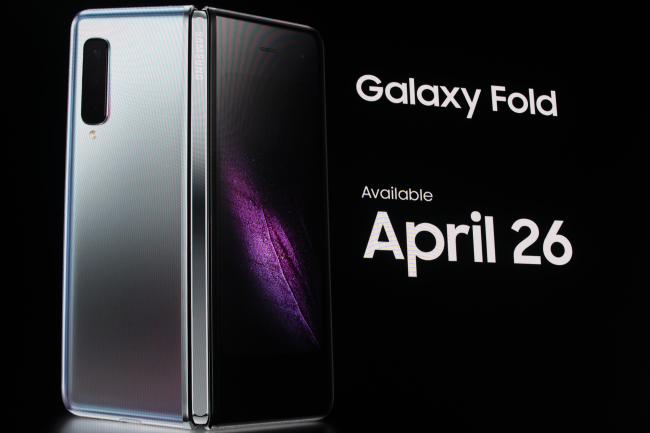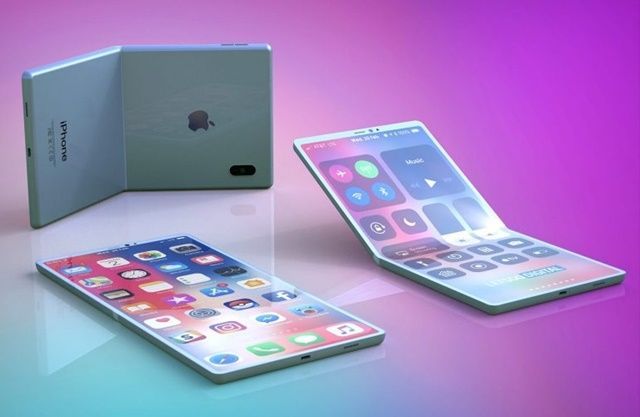[Issues in IP] Global tech firms face-off over foldable mobile displays
What was once a Samsung-Apple battle is now seeing many global rivals
By Bae HyunjungPublished : April 21, 2019 - 15:37
The Korea Herald is publishing a series of articles to review South Korea’s position in industry-specific intellectual property rights, in the light of mounting challenges. This is the second installment. -- Ed.
The seven-year patent dispute between smartphone giants Samsung Electronics and Apple has thrown the spotlight on intellectual property rights -- the big elephant in the room that will likely determine the fate of market front-runners.
The next big buzzword now is “foldable smartphones,” kick-started by Samsung, which is slated to roll out the first-ever foldable smartphone model Galaxy Fold this week.
But what has changed since the Samsung-Apple dispute is that the world’s smartphone market is no longer monopolized by them. Many tech players across the globe are now rushing to unveil their own foldable display technologies.
After its long legal battle with Apple, for allegedly breaching some iPhone patents, Samsung was apparently determined to consolidate its “first mover” position in the newly rising device market.
The essential feature of the 7.3-inch Galaxy Fold is its inward-bending display that consists of a flexible organic light-emitting diode display -- named Dynamic AMOLED -- combined with a plastic outer layer, special composite polymer and malleable adhesive. The three hinges on the outer surface are used to hold the display while keeping it from bending backwards.
The seven-year patent dispute between smartphone giants Samsung Electronics and Apple has thrown the spotlight on intellectual property rights -- the big elephant in the room that will likely determine the fate of market front-runners.
The next big buzzword now is “foldable smartphones,” kick-started by Samsung, which is slated to roll out the first-ever foldable smartphone model Galaxy Fold this week.
But what has changed since the Samsung-Apple dispute is that the world’s smartphone market is no longer monopolized by them. Many tech players across the globe are now rushing to unveil their own foldable display technologies.
After its long legal battle with Apple, for allegedly breaching some iPhone patents, Samsung was apparently determined to consolidate its “first mover” position in the newly rising device market.
The essential feature of the 7.3-inch Galaxy Fold is its inward-bending display that consists of a flexible organic light-emitting diode display -- named Dynamic AMOLED -- combined with a plastic outer layer, special composite polymer and malleable adhesive. The three hinges on the outer surface are used to hold the display while keeping it from bending backwards.

Until recently, the company had kept the detailed specifications of its patented technology confidential.
“In order to rule out all possibilities of patent disputes concerning the Galaxy Fold, the company has prepared everything it can in terms of new technologies, particularly on the hinging mechanism, display material and user interface software,” said a Samsung official.
These key technology patents certainly allow the South Korean conglomerate to trail blaze the new mobile device market, while its US archrival Apple has silently refrained from officially joining the foldable race.
The unrivaled position in the market, however, also meant that the company had to take all the risks as the first mover. Last week, several US gadget reviewers and tech journalists reported that Samsung’s premium new products had screen defects, a criticism which cut down its stock price by 3 percent on Thursday.
The Korean tech firm hurriedly vowed to evaluate the cause in the “sample units,” but nonetheless set to move ahead with the product’s scheduled launch in the US market on April 26.
Witnessing risks of the foldable phone patent champion, analyst are once again looking at Apple’s next move.
While staying mum, Apple updated its own patents on foldable display technology in early February, shortly ahead of the Galaxy Unpacked event.
US tech news outlets, including CNET, saw the move as a signal that it already has full access to the required technology but does not wish to rush into the foldable device market yet due to uncertainties.
The patent drawings show Apple’s potential foldable mobile phone to be 7.2 inch in size -- 0.1 inch smaller than Samsung’s Galaxy Fold -- and folds vertically both inward and outward.

As the products and marketing road maps of the two tech giants are being laid out, rivals have been struggling to differentiate themselves in the new market.
Online tech news outlet LetsGo Digital reported earlier this month that the United States Patent and Trademark Office has recently approved an application for a see-through foldable smartphone, a technology filed by LG Electronics. The Korean tech firm earlier unveiled a dual-screen smartphone, taking a different business approach from Samsung’s foldable model.
Chinese tech players also added momentum to their foldable race, with Huawei Technologies recently announcing the launch of foldable Mate X in July and Xiaomi earlier releasing a Twitter teaser of Mi Fold, a model that requires the user to tuck the tablet’s edges back.
Lenovo, another China-based player, has caught global attention with its unique multiple folding point design, according to LetsGo Digital. Due to the peculiar “scorpion tail” hinge, the phone may not be folded in complete symmetry and the main display is always in full sight.
Some niche market observers have brought the spotlight back on FlexPai, the first-ever flexible phone developed and patented by Chinese startup Royole. Despite its limited market leverage, FlexPai was given the Red Dot Design Award 2019 and is noted for its pioneering footprint in the foldable display patent race.
By Bae Hyun-jung, Song Su-hyun
(tellme@heraldcorp.com) (song@heraldcorp.com)











![[Today’s K-pop] BTS pop-up event to come to Seoul](http://res.heraldm.com/phpwas/restmb_idxmake.php?idx=644&simg=/content/image/2024/04/17/20240417050734_0.jpg&u=)





![[KH Explains] Hyundai's full hybrid edge to pay off amid slow transition to pure EVs](http://res.heraldm.com/phpwas/restmb_idxmake.php?idx=652&simg=/content/image/2024/04/18/20240418050645_0.jpg&u=20240419100350)

